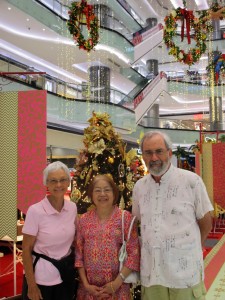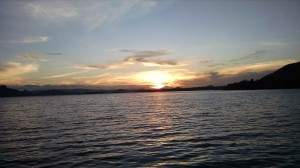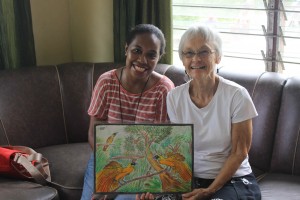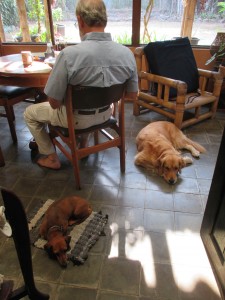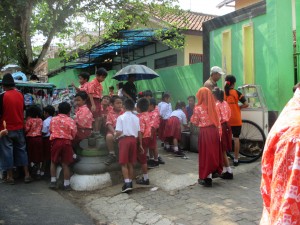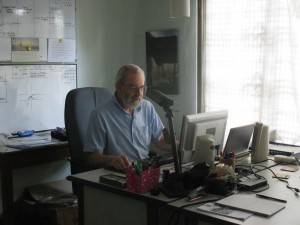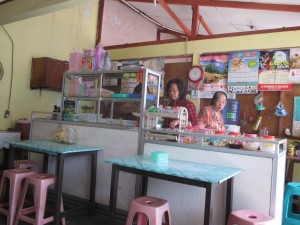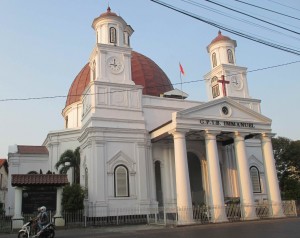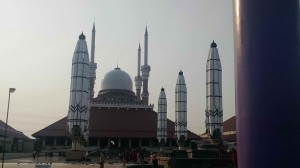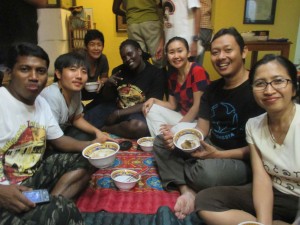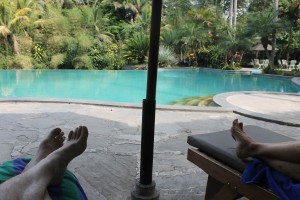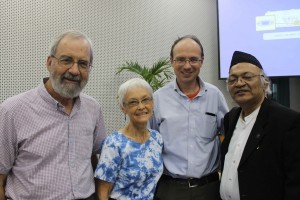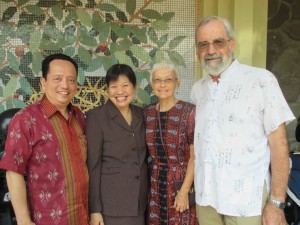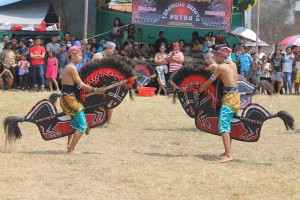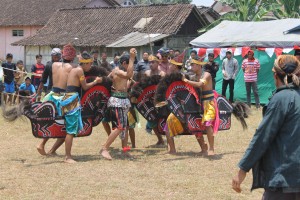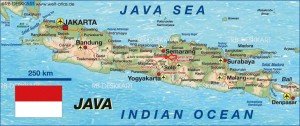There have been a number of photos we took which did not seem to warrant a separate blog or didn’t fit a blog or didn’t get on Facebook. These are a variety of memories.
Besides the number of small shops along the streets, there are several large “department stores.”
-

-
clothing
-

-
“big sales”
-

-
frozen hot dags & french fries
We’ve attended various churches. The GKMI church in Salatiga has been closely associated with MCC for many years. This is the one we attended the most often. One Sunday we drove about 20 minutes to a Catholic monastery outside Salatiga and located higher up in the hills. The service was packed (I didn’t take photos). The grounds are lovely. And after the service they sell kefir which they make and is very good!
-

-
GKMI Mennonite church
-

-
Gedono
-

-
the altar
-

-
beautiful flowers
One day we went along to Yogya to collect furniture of a former MCCer. We were amazed at the men just lifting the motor cycle on to the truck. In the previous blog we had photos of the organization of the storage rooms back at the office when we brought back these household items. During the last week the gardener cleaned out all the brush from the back courtyard of the office. I had forgotten how pretty it can be.
-

-
loading a motorcycle
-

-
office courtyard
Another day a young man was hired to cut most of the branches from a tree outside our office window. The gardener had recently found a man in that tree pretending to look for birds but mostly likely was looking for a way on to the roof and in to our building. The man who cut the tree used only a panga to hack off the limbs – some up to a foot in diameter!
-

-
chopping the tree
Just a number of photos along the roadside as we traveled to various places.
-

-
housing area
-

-
rice fields
-

-
“everything” for sale
-

-
artificial plants for sale
-

-
baskets
We have had photos of the two dogs that live at this house. It has been a learning experience in taking care of them. In the process, Sally Jo discovered she is allergic to the hair and broke out in hives. (The one dog, especially, liked to sleep on the furniture.) So she had a sheet that she always put down on the chairs before sitting. After a few weeks, we came home one day to find that the house help had arranged the furniture so that the dogs would not sleep on the cushions! Later on, Ibu Wasti washed all the cushion covers and put all the cushions in another room so that every time we wanted to sit down, we had to get the cushions. She was very helpful!
-

-
keeping clean cushions!
-

-
“dog proof”
We had a photo of a cockroach in our last blog. However, we also saw small chameleons and other lizards. The smaller ones which lived in the house were too fast to get a photo. They are considered helpful in that they eat mosquitoes.
-

-
lizard
-

-
chameleon
One day we attended a youth conference in Solo organized by one of MCC’s partners. It brought together 100 young people from various parts of Indonesia for three days to learn about interfaith peacemaking. There were young people from Muslim, Catholic, Protestant, Buddhist, and Hindu faiths. It was exciting to see their enthusiasm.
-

-
Youth Peace Conference
-

-
women leaders at conference
We mentioned once that we stepped in and “taught” an English class at the local university for one of the MCCers who was ill. It was fun.
-

-
classroom
-

-
helping students
-

-
university students
-

-
helping
Just some miscellaneous photos of MCC team members. Brooklyn, 1½ yr, came trick-or-treating. One of the YALTers is in to acro yoga and taught some others. Zachary is the newest member of the MCC team. Here he is at less than 2 days old!
-

-
Brooklyn
-

-
acro-yoga
-

-
Zachary less than a day old
-

-
less than 2 days old
-

-
MCC office team
And then we always have photos of food! The food is good and relatively cheap. Our simple lunches were usually under $2.00. Our good meal of grilled fish, vegetables, rice, and lemonade cost less than $7.00 for the two of us!
-

-
brewed coffee
-

-
fish, vegetables, rice
